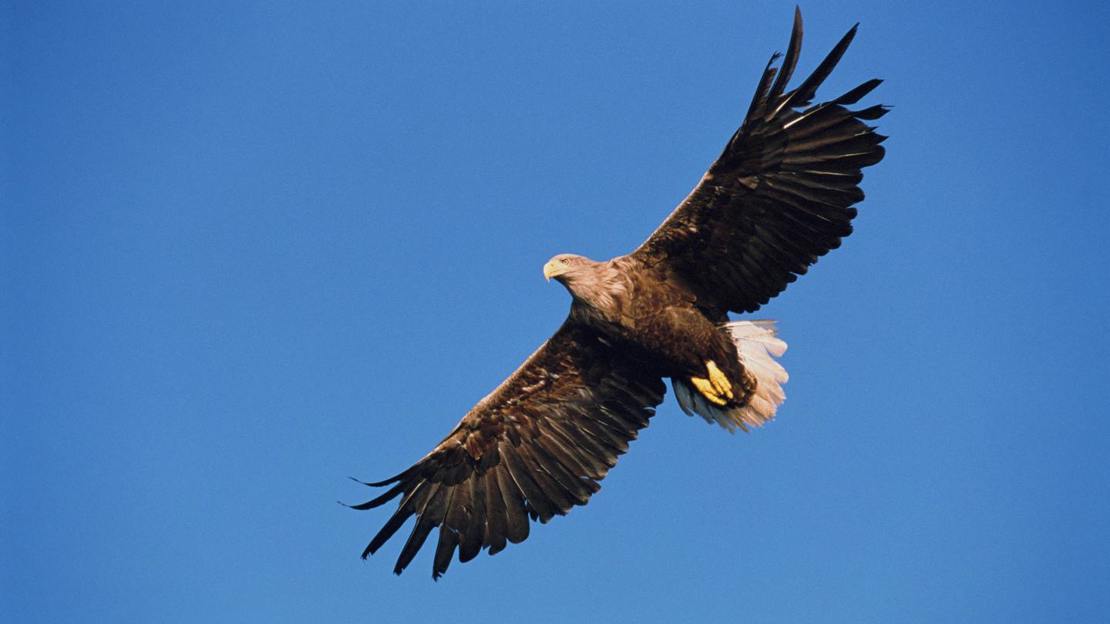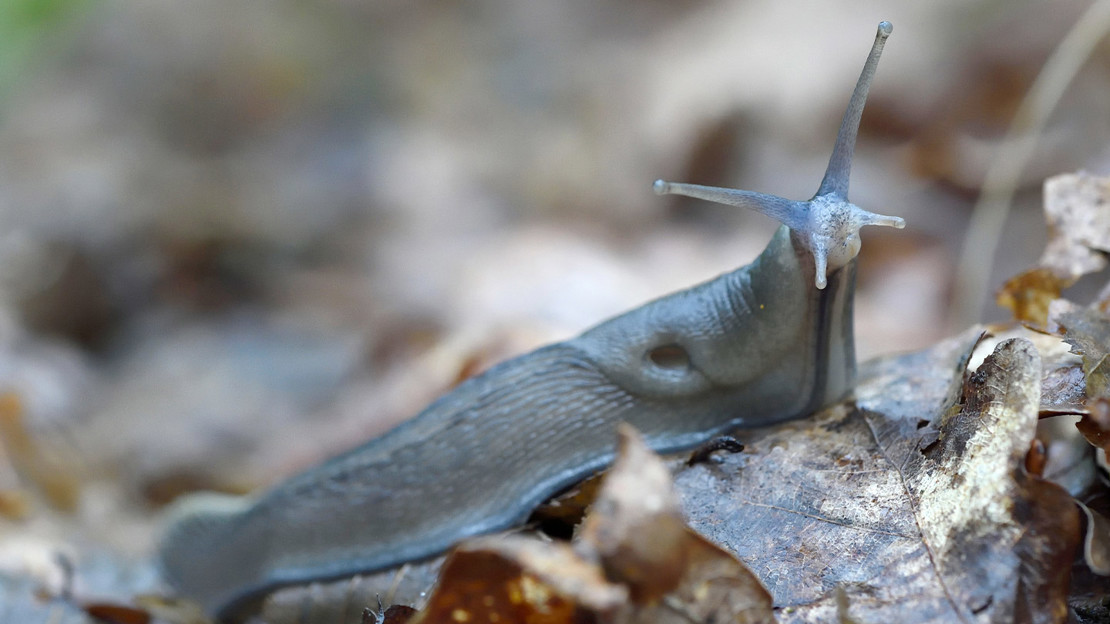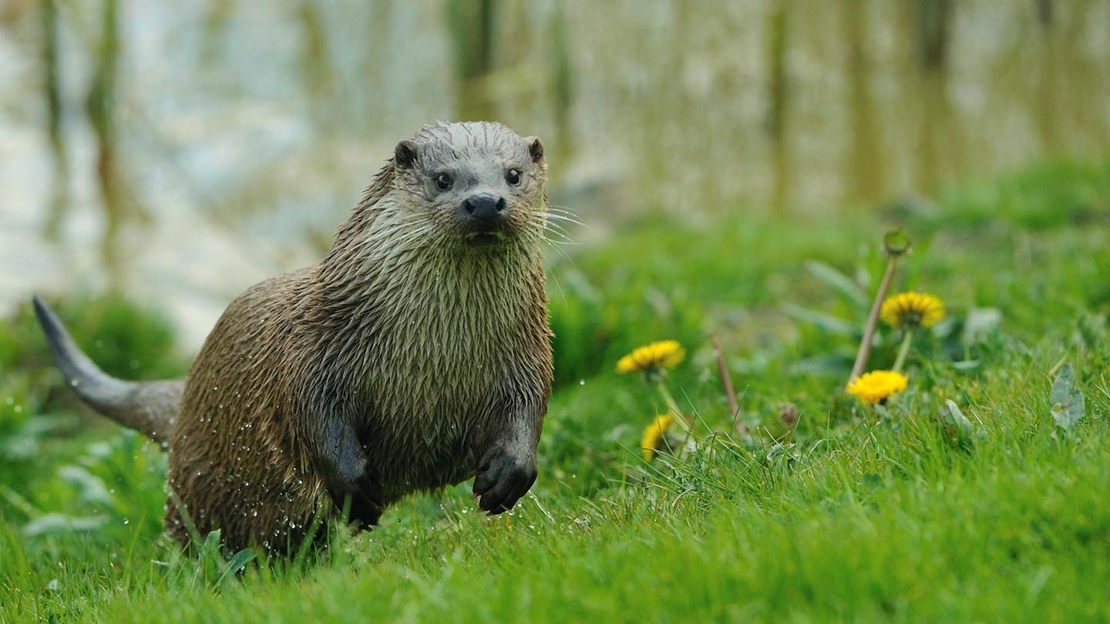Save our rainforests
Help support our vital conservation work to protect our vanishingly rare woodland habitats before we lose them forever.
Please help
Digital content editor
Temperate rainforests rustle and sway with life – but do you know which animals are hiding among the sparkling rivers, mossy boulders and wizened trees of these fairytale forests?
From enormous, wart-charming slugs to astonishingly athletic fish, discover the remarkable animals found in the UK’s temperate rainforest.

When thinking of rainforests, many of us envision faraway lands teeming with tropical wildlife. We have all but forgotten the majestic temperate rainforest (also known as Atlantic rainforest) that once covered a fifth of Britain. This unique habitat is now extremely rare, fragmented and threatened in the UK, but continues to support a mind-boggling array of native wildlife thanks to its mild climate, high humidity and plentiful rainfall.
The rainforest’s exuberant plant life supports an abundance of insects, some of which are so rare they are found nowhere else in the world. These insect-rich conditions provide rich pickings for hungry migrant birds such as pied flycatcher and redstart, while elsewhere, shy and elusive mammals including pine marten and otter shelter among the lush vegetation.
From the Scottish Highlands down to Cornwall, fragments of temperate rainforest are dotted across the west coast of the UK. Stepping into these enchanted groves, it’s not hard to imagine why they were considered sacred by the Celtic Druids; a magical stillness beneath the woodland canopy invites a deep sense of connection to the natural world.
Experience their ancient wonder for yourself by discovering rainforests to explore in the UK, including wildlife-rich sites across Scotland, Wales, Devon, Cornwall, Cumbria and Northern Ireland.
Help support our vital conservation work to protect our vanishingly rare woodland habitats before we lose them forever.
Please helpFish feed forests – in the temperate rainforests of North America, trees near rivers rich with salmon can grow three times faster than trees next to rivers without salmon!
Acrobats of the river, wild Atlantic salmon are capable of leaping over waterfalls, weirs and fallen trees as they journey upstream, clearing obstacles up to 3.7 meters (12 feet) high – their Latin name even translates to ‘salmon the leaper’!
These blue-silver fish spend much of their life in the ocean, but return to freshwater breeding grounds to breed. They die soon afterward, fertilising the rainforest with open ocean nutrients such as nitrogen and phosphorus stored in their bodies.
‘Start’ is an old English term for tail, so the redstart’s name refers to its brilliant orange tail.
Recognisable by its quivering orange tail, this vibrant summer migrant arrives each year from central Africa between April and September. Redstarts thrive in temperate rainforests, which provide tasty caterpillars, spiders, worms and berries to feast on, as well as plenty of materials to build cosy, cup-shaped nests lined with feathers and fur.
Jays are widespread in many habitats across the UK, but they are especially crucial to the survival of our temperate rainforests. These distinctive birds have a flashy blue panel on their black-and-white wing feathers and a hearty appetite for acorns, which they carry across forests in their beaks and bury in the earth for safekeeping. Forgotten acorns then grow into mighty oaks, the mainstay of Britain’s temperate rainforests.

Our largest bird of prey, the white-tailed eagle is making a welcome comeback to the UK’s temperate rainforests after being extinct for much of the 20th century. These magnificent predators patrol the coastline and swoop down on fish at sea, often discarding the remains of their devoured prey further inland. This enriches the soil of the temperate rainforest with nutrients from the ocean, interlinking marine and forest ecosystems.

Though small and unassuming, these skilful birds are renowned for their aerial acrobatics as they gobble up insects mid-air. Pied flycatchers are summer migrants, arriving in spring each year after journeying thousands of miles from West Africa. They are particularly well adapted to temperate rainforests, which are replete with tasty insects as well as gnarled old trees with cosy crevices and cavities to nest in.
Somewhat of a homebody, the incredibly rare chequered skipper only exists within a 40-kilometer (25-mile) radius of Fort William in west Scotland. Favouring mild, damp sheltered woodland glades, this butterfly has been spotted at the edges of the temperate rainforests of Loch Arkaig.
Look out for the delicate golden chequered pattern on its dark brown wings. Females often lay eggs on lush purple moor grass, so that ravenous young caterpillars can feast on this vital food plant when they hatch.

On south-facing slopes of river valleys in Devon and Cornwall, a particularly elusive and gleaming insect can be found roaming great distances at night. Blue ground beetles have dazzling, metallic blue markings and are incredibly rare, found only in South West England.
The abundance of mosses in mild, humid temperate rainforests are crucial to the lifecycle of these beetles, which hibernate in the quiet, damp shelter of mossy dead bark.

In the past, these unfortunate slugs were thought to cure warts – after being rubbed on the affected area, they were impaled on a thorn!
Reaching lengths of up to 25 centimeters (9.8 inches), these enormous slugs are the largest found in the UK. By night, they munch on fungi, lichens and algae across the temperate rainforest floor, before tucking themselves away under deadwood during the day. Their otherworldly mating ritual involves the intertwined couple dangling from a tree in a sticky mucus.

These ecosystem engineers are ingenious architects. By gnawing away at trees and building dams in streams and rivers, they create lush wetland habitats which improve water quality downstream, while also boosting the temperate rainforest’s all-important humidity levels.
The deep, still ponds created by beaver dams are also havens for an astonishing array of wildlife, from otters and water shrews to dragonflies and breeding fish.

These lithe and agile swimmers can be found in the rivers of temperate rainforests across the UK, where they expertly hunt fish, waterbirds, amphibians and crustaceans. Along riverbanks, otters raise their cubs in underground burrows, known as ‘holts’, which they line with ferns, reeds and grasses.
Otters are elusive but you might spot clues that one is nearby. Look out for five-toed footprints along riverbanks and strong-smelling droppings with a distinctive scent that’s bizarrely similar to jasmine tea!

Adorable yet ferocious, these formidable hunters are well suited to temperate rainforests which provide abundant food sources, including birds, voles, rabbits and insects as well as berries, fungi and eggs. Hunting and habitat loss have pushed these elusive mustelids to the brink of extinction in the UK.
We are working hard to welcome pine marten to our woods once more – including the lush temperate rainforests of Dartmoor in Devon, where we released seven males and eight females in the autumn of 2024.

Help support our vital conservation work to protect our vanishingly rare woodland habitats before we lose them forever.
Please help